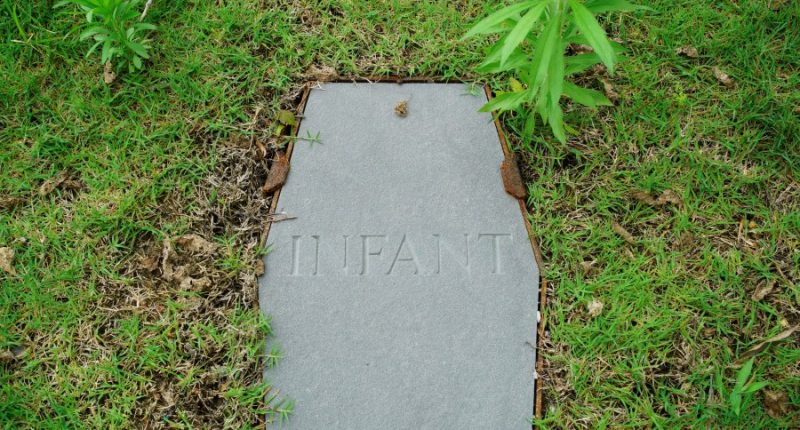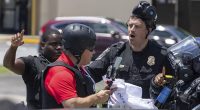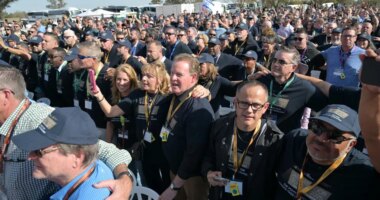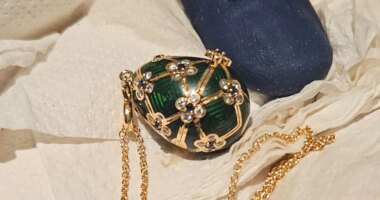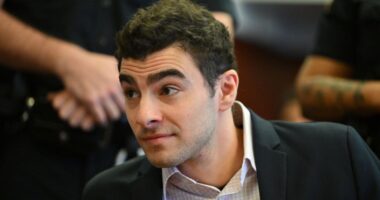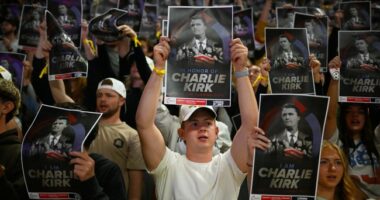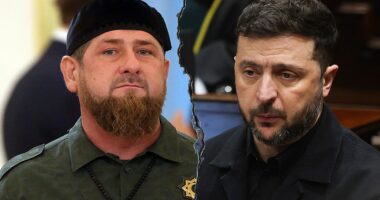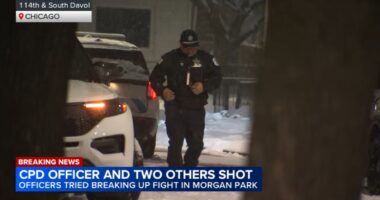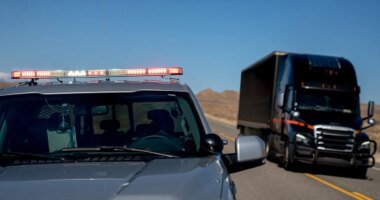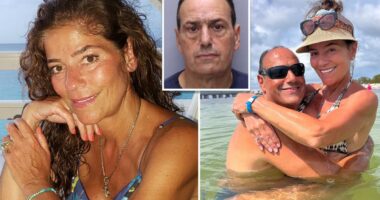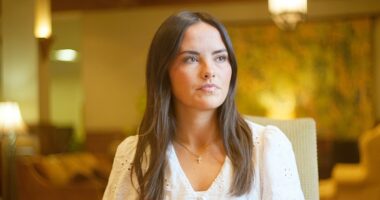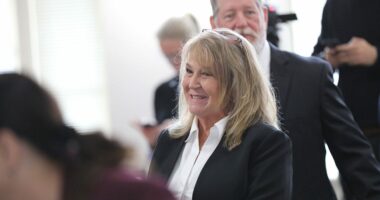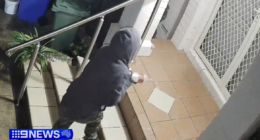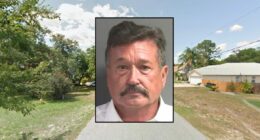Share this @internewscast.com

A groundbreaking ceremony is set to take place Thursday for the reconstruction of one of America’s oldest Black churches, where its early members initially gathered secretly outdoors before building a wooden meetinghouse in Virginia.
The First Baptist Church of Williamsburg was officially founded in 1776, but its congregation began meeting before that time beneath the open sky, defying laws that prohibited African Americans from gathering. Both free and enslaved individuals came together to construct the original church around 1805, utilizing recycled bricks for its foundation.
Pastor Reginald F. Davis of the First Baptist Church shared with The Associated Press, ahead of the groundbreaking on Juneteenth, that rebuilding the 16-foot by 32-foot (5-meter by 10-meter) structure serves to highlight that “Black history is American history.”
“Oral history is one thing but to have an image to go along with the oral history makes a greater impact on the psyche of oppressed people,” said Davis, who leads the current 215-member congregation in a 20th Century church that is less than a mile from the original site. “Black Americans have been part of this nation’s history before and since the Declaration of Independence.”
The original building was destroyed by a tornado in 1834. First Baptist’s second structure, built in 1856, stood there for a century. But the Colonial Williamsburg Foundation, a living history museum, bought the property in 1956 and turned the space into a parking lot.
Colonial Williamsburg had covered the costs of building First Baptist’s current church house. But for decades it failed to tell the church’s pioneering history and the stories of other colonial Black Americans.
In recent years, the museum has placed a growing emphasis on telling a more complete story about the nation’s founding. Colonial Williamsburg’s rebuilding of the church is an opportunity to tell Black history and resurrect the stories of those who originally built it.
Telling Virginia’s untold story
Rebuilding First Baptist’s original meetinghouse will fill an important historical gap, while bolstering the museum’s depiction of Virginia’s 18th century capital through interpreters and restored buildings. More than half of the 2,000 people who lived in Williamsburg at the time were Black, many of them enslaved.
Rev. James Ingram is an interpreter who has for 27 years portrayed Gowan Pamphlet, First Baptists’ pastor when the original church structure was built. Pamphlet was an enslaved tavern worker who followed his calling to preach, sermonizing equality, despite the laws that prohibited large gatherings of African Americans out of fear of slave uprisings.
“He is a precursor to someone like Frederick Douglass, who would be the precursor to someone like Martin Luther King Jr.,” Ingram said. “Gowan Pamphlet was leading the charge.”
The museum’s archaeologists uncovered the original church’s foundation in 2021, prompting Pastor Davis to say then that it was “a rediscovery of the humanity of a people.”
“This helps to erase the historical and social amnesia that has afflicted this country for so many years,” he said.
The archaeologists also located 62 graves, while experts examined three sets of remains and linked them to the congregation.
Scientists at William & Mary’s Institute for Historical Biology said the teeth of a Black male in his teens indicated some kind of stress, such as malnutrition or disease.
“It either represents the conditions of an enslaved childhood or far less likely — but possibly — conditions for a free African American in childhood,” Michael Blakey, the institute’s director, said in 2023.
‘It was a marvel’
In the early 1800s, the congregation acquired the property for the original church from a local white merchant. The land was low, soft and often soggy — hardly ideal for building, said Jack Gary, Colonial Williamsburg’s executive director of archaeology.
But the church’s congregants, many of whom were skilled tradespeople, made it work by flipping bricks on their side and making other adjustments to lay a level foundation.
“It was a marvel that they were able to build a structure there, but also that the structure persists and even grows bigger,” Gary said, adding that the church was later expanded.
Based on their excavation, archaeologists surmise there was no heat source, such as a fireplace, no glass in the windows and no plaster finish, Gary said.
About 50 people could have sat comfortably inside, possibly 100 if they were standing. The congregation numbered about 500, which included people on surrounding plantations. Services likely occurred outside the church as well.
White planters and business owners were often aware of the large gatherings, which technically were banned, while there’s documentary evidence of some people getting caught, Gary said.
Following Nat Turner’s rebellion in 1831, which killed more than 50 white people in Virginia’s Southampton County, the congregation was led by white pastors, though it was Black preachers doing the work, Gary said. The tornado destroyed the structure a few years later.
Boards are being cut
The museum is rebuilding the 1805 meetinghouse at its original site and will use common wood species from the time: pine, poplar and oak, said Matthew Webster, the museum’s executive director of architectural preservation and research. The boards are already being cut. Construction is expected to finish next year.
The windows will have shutters but no glass, Webster said, while a concrete beam will support the new church directly over its original foundation, preserving the bricks.
“When we build the earliest part of the church, we will put bricks on their sides and will lay them in that strange way because that tells the story of those individuals struggling to quickly get their church up,” Webster said. “And then when we build the addition, it will be this formal foundation that really shows the establishment of the church.”
Janice Canaday, who traces her lineage to First Baptist, said Williamsburg’s Black community never forgot its original location or that its graves were paved over in the 1950s.
“They will never be able to expunge us from the landscape,” said Canaday, who is also the museum’s African American community engagement manager. “It doesn’t matter if you take out the building. It doesn’t matter if you ban books. You will never be able to pull that root up because that root is so deep.”
